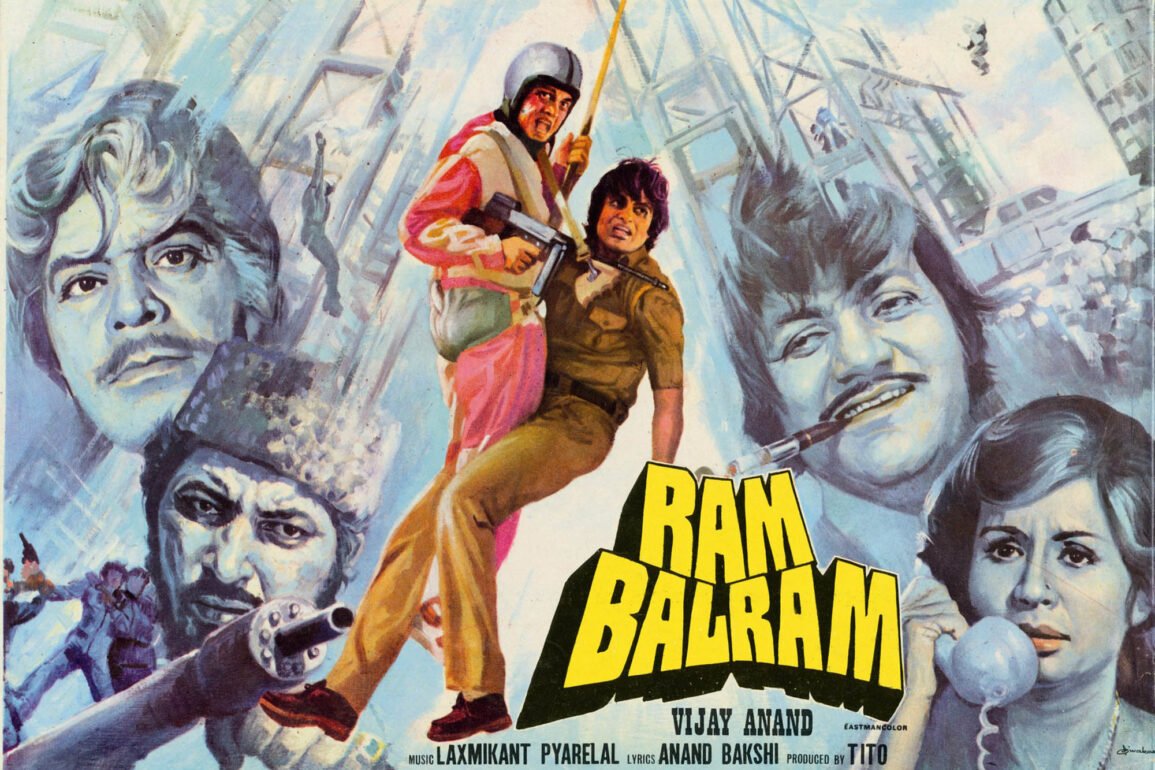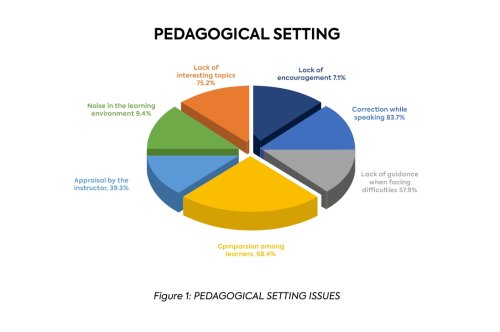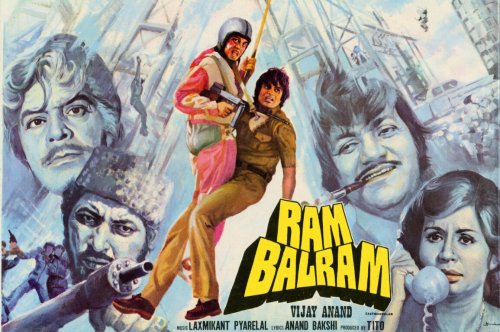
Hey there, movie buffs and music lovers!
Picture this: You're grooving to the latest Bollywood hit, and suddenly you catch yourself singing along to phrases like "Let's hit the dance floor" or "You're my soulmate, baby." Wait a minute - isn't this supposed to be a Hindi song?
If you've ever had this experience, you're not alone! The seamless blend of English words and phrases in Bollywood songs isn't just a recent fad - it's a fascinating linguistic journey that's been unfolding for decades. This mixing of languages, often referred to as "Hinglish" (a portmanteau of Hindi and English), has become so commonplace that you might not even notice it anymore. But trust us, there's a whole lot of cultural history and social dynamics packed into those catchy tunes!
According to research by Dr. Aysha Viswamohan, published in the journal "English Today," this trend isn't just limited to Bollywood. It's a phenomenon that's sweeping across Indian cinema, from the bustling streets of Mumbai to the vibrant film industry of Tamil Nadu (Viswamohan, 2011).
But why is this happening? Is it just about sounding cool, or is there more to the story? How has the use of English in Indian film songs evolved over the years? And what does this linguistic masala tell us about India's relationship with the English language and global pop culture?
In this blog post, we're going to take you on a musical journey through time. We'll explore how English went from being used for comic relief in the 1950s to becoming an integral part of romantic ballads and peppy dance numbers today. We'll look at some hilarious examples of mangled English from the past, and some smooth Hinglish lyrics that might surprise you with their creativity.
So, whether you're a die-hard Bollywood fan, a linguistics nerd, or just someone who loves a good tune, buckle up! We're about to dive into the colorful, rhythmic, and sometimes surprising world of English in Indian film songs. Get ready to see (or rather, hear) your favorite songs in a whole new light!
Ready to start this musical adventure? Let's dive in!
The Early Days: English for Laughs and Learning
Imagine yourself in a dimly lit movie theater in 1950s India. The nation has just gained independence, and the film industry is booming. Suddenly, amidst the melodious Hindi lyrics, you hear something unexpected - English words! But wait, why is everyone laughing?
Welcome to the early days of English in Hindi film songs, a time when the language of the former colonial rulers was used primarily for comic effect or to depict characters trying to appear educated or sophisticated. Let's dive into this fascinating era!
The Comic Touch: C-A-T Spells Laughter
One of the most famous examples from this period comes from a Hindi film of the 1950s. Picture this: a song playing in the background goes, "C-a-t, cat. Cat mane billi; r-a-t, rat mane chooha" (Viswamohan, 2011, p. 21). For those who don't speak Hindi, "mane" means "means," "billi" means "cat," and "chooha" means "rat."
This quirky blend of English spelling and Hindi translation wasn't just catchy - it was downright hilarious to the audience of the time. It played on the idea of Indians learning English, often through rote memorization of spelling and basic vocabulary. The song became a massive hit, especially among the youth.
The Purists' Pushback
But not everyone was amused. As Dr. Viswamohan notes in her research, this song "was scoffed at by the then contemporary purists who found it hard to accept such 'blatant' dilution of the Hindi language" (2011, p. 21). These critics saw the inclusion of English as a threat to the purity and integrity of Hindi, especially in the realm of film songs which were (and still are) a significant part of Indian popular culture.
Beyond Comedy: English as a Status Symbol
While comedy was the primary vehicle for English in songs during this era, it wasn't the only one. Some songs used English to portray characters aspiring to appear educated or "modern." This reflected the complex relationship India had with English at the time - it was simultaneously the language of the former colonizers and a pathway to higher education and global opportunities.
Setting the Stage for Future Trends
Little did these critics know that this was just the beginning. The use of English in Hindi songs, which seemed so shocking in the 1950s, was setting the stage for a linguistic revolution in Indian cinema. In the coming decades, English would evolve from being just a source of comedy to an integral part of expression in Indian film music.
Fun Fact: The Spelling Song Legacy
Interestingly, the tradition of "spelling songs" didn't die out with this era. Even in recent times, Bollywood has produced songs that play with English spelling, though now more as a nod to this quirky tradition than for pure comic effect. For instance, the 2007 film "Jab We Met" featured a song that went, "L-O-V-E love, P-Y-A-R pyaar" (Love in Hindi is 'pyaar'), showing how this early trend has left a lasting impact on Bollywood music.
As we move forward in our journey through the decades, we'll see how the use of English in Hindi songs evolved from these comic beginnings to become something much more complex and integral to the music. But for now, let's appreciate the audacity and creativity of these early songwriters who dared to mix languages in a way that had never been done before!
The 70s: London Calling (and Bringing Broken English)
As we groove into the 1970s, the disco era isn't the only thing making waves in India. This decade marks a significant shift in how English is used in Hindi film songs. Gone are the days when English was merely a source of schoolroom humor. Now, it's becoming a tool to portray sophistication, urban cool, and sometimes, hilarious misunderstandings. Let's put on our bell-bottoms and dive into this groovy era!
The "London-Returned" Phenomenon
In the 1970s, Indian cinema saw a rise in characters who had either visited or lived in London. These "London-returned" individuals were often portrayed as trying to show off their worldliness and sophistication. This trend reflected a real-life phenomenon where Indians who had been abroad were seen as more modern and cool.
Dr. Viswamohan gives us a perfect example from the early 70s film "Gopi":
"Gentleman gentleman, gentleman / London se aaya mein ban-than ke...... / Yeh dekh mera suita / Yeh dekh mera boota / Yeh dekh mera comba" (Viswamohan, 2011, p. 21)
Translation: "I'm a debonair gentleman from London. Look at my suit, look at my boots, and look at my comb"
The Art of Mispronunciation
Notice something funny about those lyrics? "Suit" becomes "suita," "boot" becomes "boota," and "comb" transforms into "comba." This intentional mispronunciation wasn't just for laughs (although it certainly got them). It served multiple purposes:
- Comic Effect: It poked fun at those trying too hard to appear westernized.
- Cultural Commentary: It highlighted the sometimes awkward integration of English into Indian society.
- Accessibility: It made English words more familiar to Hindi-speaking audiences.
Beyond London: The Wider English Influence
While London was often the go-to reference, the influence of English extended beyond just British connections. The growing presence of English-language media, the rise of international travel, and India's increasing engagement with the global economy all contributed to the language's prominence.
The Urban-Rural Divide
Another interesting aspect of English usage in 70s Bollywood songs was how it highlighted the urban-rural divide in India. Dr. Viswamohan points out a song from the film "Sageena" where a villager returns from the city singing:
"saalaa main to saahab ban gaya / saahab banke kaisa tan gaya / ye suit mera dekho, ye boot mera dekho / jaise gora koi London ka" (Viswamohan, 2011, p. 21)
Translation: "Folks, I've turned into a gentleman, and am proud to be so. Notice my suit and boot; I appear like a white man from London"
This song not only provides humor but also underscores the perceived prestige associated with English and urban lifestyles.
A Step Towards Integration
While the use of English in this era was often exaggerated for comic effect, it marked an important step in the language's integration into Hindi cinema. English was no longer just a foreign element to be laughed at; it was becoming a part of the characters' identities and aspirations.
Fun Fact: The Rare All-English Song
Interestingly, this decade also saw a rare instance of an entire song in fluent English in a mainstream Hindi film. The song "My heart is beating" from the 1975 film "Julie" was a major hit. However, this was justified in the plot as the film focused on an Anglo-Indian family in Goa, where English would naturally be spoken (Viswamohan, 2011, p. 22).
As we move into the next decades, we'll see how this playful, sometimes awkward use of English evolves into something more integrated and natural. But for now, let's appreciate the 70s for giving us some of the most memorable and entertaining Hinglish lyrics in Bollywood history!
The Big Change: 1990s and Beyond - English Goes Mainstream
As we step into the 1990s, we're not just entering a new decade - we're witnessing a seismic shift in Indian pop culture, and the way English is used in Hindi film songs. Gone are the days when English was just for comic relief or showing off. Now, it's becoming an integral part of the emotional landscape of Bollywood music. Let's dive into this transformative era!
The Globalization Effect
The 1990s marked a turning point for India. Economic liberalization opened the country to global markets, and with it came a flood of international media. Cable TV brought MTV and Hollywood into Indian living rooms, and suddenly, English wasn't just a language - it was a gateway to global cool.
Dr. Viswamohan explains this shift eloquently:
"It is evident that post nineties, the massive exposure to global popular culture through media and satellite television has played a major role in the unabashed and unapologetic use of English in Indian society." (Viswamohan, 2011, p. 22)
English Gets Emotional
Perhaps the most striking change was the use of English in serious, emotional contexts. Take, for example, the 1995 film "Akele Hum Akele Tum." In a heartbreak song, we hear these lyrics:
"Why did you break my heart? Why did we fall in love? Why did you go away, away...?" (Viswamohan, 2011, p. 22)
This wasn't just a line or two - it was pure English in a Hindi film, expressing deep emotion. And remarkably, nobody batted an eye. This acceptance marked a significant shift in how the Indian audience perceived English - no longer foreign, but a natural part of their emotional vocabulary.
Code-Switching: The New Normal
The 1990s and 2000s saw the rise of seamless code-switching between Hindi and English in songs. This wasn't just about inserting an English word here and there - entire phrases and sentences in English became common. For instance, the song "Koi Mil Gaya" from "Kuch Kuch Hota Hai" (1998) smoothly blends lines like "There's a strange connection with you" into its Hindi lyrics.
English in Every Genre
As we moved into the 2000s, English found its way into every genre of Bollywood music:
- Romance: "You are my Sonia" from "Kabhi Khushi Kabhie Gham" (2001)
- Party songs: "It's the time to disco" from "Kal Ho Naa Ho" (2003)
- Patriotic songs: "Rang de Basanti" title track (2006) includes the line "The color of sacrifice"
The Youth Connection
English became particularly prevalent in songs targeting the youth. Dr. Viswamohan notes examples like:
"Oh yeah, this is the thing, do you know what I mean...what's up this big snoop dog / represents the Punjabi" (from "Singh is King," 2008) (Viswamohan, 2011, p. 23)
These lyrics reflect the increasing comfort of Indian youth with English and their exposure to global pop culture.
Beyond Bollywood: Regional Cinema Joins In
This trend wasn't limited to Hindi cinema. Tamil films, for instance, started incorporating English extensively. The 2003 Tamil film "Boys" even had a song that went:
"D-a-t-i-n-g; dating is a fantasy" (Viswamohan, 2011, p. 24)
The New Linguistic Reality
By the late 2000s and early 2010s, the use of English in Hindi songs wasn't just accepted - it was expected. It reflected the linguistic reality of urban India, where code-switching between English and local languages had become the norm.
Looking Ahead
As we move further into the 21st century, the integration of English in Indian film songs continues to evolve. From being a marker of sophistication or humor, it has become a natural part of the Indian musical landscape, reflecting the country's multilingual reality and its place in a globalized world.
This era marked not just a change in lyrical trends, but a fundamental shift in how Indian cinema and its audience related to the English language. It's a fascinating journey from "C-a-t, cat" to "Why did you break my heart?" - a journey that continues to unfold in exciting ways!
Party Time!
Ladies and gentlemen, put on your dancing shoes because we're about to dive into the pulsating world of Bollywood party anthems! The 2000s marked a new era in Hindi film music, where English didn't just make an appearance – it took center stage on the dance floor. Let's explore how English became the life of the Bollywood party!
The Rise of the Bilingual Banger
As India stepped into the new millennium, its film industry was ready to groove to a new beat. Party songs, always a staple of Bollywood films, began to incorporate English lyrics more prominently than ever before. This wasn't just about throwing in a word or two – entire choruses and verses were now being belted out in English.
Dr. Viswamohan notes in her research that this trend reflected the "club and party culture" that was becoming increasingly popular in urban India (Viswamohan, 2011, p. 22). Let's break down some of the biggest hits:
- "It's the Time to Disco" - Kal Ho Naa Ho (2003) This infectious tune had everyone singing "It's the time to disco!" The song seamlessly blends Hindi and English, with lines like "I wanna dance with you, oh come on!" mixed with Hindi verses. It became an instant party staple across India.
- "Where's the Party Tonight?" - Kabhi Alvida Naa Kehna (2006) This song took it a step further. Not only was the chorus in English, but it also incorporated contemporary slang: "Where's the party tonight? That's right!" The song perfectly captured the energy of the club scene that was booming in Indian metros.
- "Rock N Roll Soniye" - Kabhi Alvida Naa Kehna (2006) Another hit from the same film, this song showcases how deeply English had penetrated party lyrics: "Let's rock n roll soniye (beautiful)!" Here, English and Punjabi blend effortlessly.
Smooth Transitions: The Art of Linguistic Fusion
What made these songs truly remarkable was how smoothly they transitioned between Hindi and English. Take "Dus Bahane" from "Dus" (2005), for example. It switches from "I wanna be your only one" to "तेरे बिन जीना नहीं" (I can't live without you) without missing a beat. This linguistic agility reflected the ease with which young, urban Indians were code-switching in their daily lives.
More Than Just Words: The Cultural Shift
The prevalence of English in party songs wasn't just a linguistic phenomenon – it represented a cultural shift. These songs were:
- Aspirational: They represented the glamorous, globalized lifestyle that many young Indians aspired to.
- Inclusive: By mixing languages, they appealed to both Hindi speakers and the English-speaking urban elite.
- Modern: They positioned Bollywood as a modern, global industry, not confined by language barriers.
Beyond Bollywood: The Trend Spreads
This trend wasn't limited to Hindi cinema. Tamil films, for instance, embraced this bilingual party vibe. The 2007 Tamil film "Billa" featured the song "My Name is Billa," which was peppered with English phrases and became a massive hit.
The Legacy Continues
As we moved into the 2010s and beyond, this trend only intensified. Songs like "Chammak Challo" from "Ra.One" (2011), partly sung by international star Akon, and "London Thumakda" from "Queen" (2014) continued to blend English and Hindi in party settings.
Cultural Impact: More Than Just Fun
While these songs were undoubtedly fun, they also played a significant role in normalizing the use of English in everyday Indian contexts. They reflected and reinforced the idea that switching between languages was cool, modern, and quintessentially Indian.
As Dr. Viswamohan observes, "The acceptance of English in diverse situations contributes to 'legitimating the hegemony of English" (Viswamohan, 2011, p. 23). These party songs, in their own peppy way, were part of a larger shift in India's linguistic landscape.
So, the next time you find yourself grooving to a Bollywood party number, pay attention to the lyrics. You're not just dancing to a catchy tune – you're witnessing a fascinating linguistic and cultural phenomenon in action!
Why Is This Happening?
As we've journeyed through the decades of English in Indian film songs, you might be wondering: What's driving this linguistic mashup? Why has English become such an integral part of the Bollywood soundscape? Let's dive deep into the factors behind this fascinating trend.
The Cool Factor: English as a Symbol of Modernity
In India, English often carries an aura of sophistication and modernity. Dr. Viswamohan points out that "English is seen as cool and modern by many young Indians" (Viswamohan, 2011, p. 23). But why?
- Global Connectivity: English is seen as a gateway to global culture, opportunities, and experiences.
- Urban Identity: In many Indian cities, fluency in English is associated with education and upward mobility.
- Pop Culture Influence: With the influx of Western music, movies, and TV shows, English phrases have become part of youth lingo.
Example: The song "Desi Girl" from "Dostana" (2008) plays on this perception with lines like "My desi girl, she's so amchi Mumbai" - a perfect blend of English, Hindi, and Marathi that captures the multilingual urban experience.
Broadening the Appeal: Reaching the Global Indian Audience
Bollywood isn't just for India anymore - it's a global phenomenon. English in songs helps filmmakers appeal to a wider audience, including:
- NRIs (Non-Resident Indians) and PIOs (Persons of Indian Origin) living abroad
- Second and third-generation immigrants who might not be fluent in Hindi
- International audiences who are curious about Indian cinema
As Dr. Viswamohan notes, "Indian filmmakers are also making strident efforts to globally market their products" (Viswamohan, 2011, p. 24).
Example: "My Name is Khan" (2010) features the song "Sajda," which includes the line "I am in love with you" - a simple English phrase that resonates across linguistic boundaries.
Linguistic Precision: When English Just Fits Better
Sometimes, an English word or phrase simply captures the intended meaning more precisely or succinctly than its Hindi equivalent. This is particularly true for:
- Modern concepts or technology: Words like "phone," "internet," or "party" are often used as-is.
- Emotional expressions: Phrases like "I love you" have become universally understood.
- Rhythmic and melodic considerations: English words might fit the beat or rhyme scheme better.
Example: In "Kal Ho Naa Ho" (2003), the line "Every night in my dreams" flows more naturally in the melody than a Hindi translation would.
Reflecting Linguistic Reality: Mirroring Real-Life Code-Switching
The mixing of English and Hindi in songs often mirrors the way many Indians, especially in urban areas, actually speak. This phenomenon, known as code-switching, is common in multilingual societies.
Dr. Viswamohan observes that "Code-mixing takes place to some degree everywhere that English is spoken alongside another language, and is a normal feature of bilingualism" (Viswamohan, 2011, p. 24, citing Crystal, 1995).
Example: The song "Chaiyya Chaiyya" from "Dil Se" (1998) includes the line "Those who want to, come to me running" - a direct translation of how a Hindi-English bilingual might express this thought.
Economic Liberalization and Globalization
The increased use of English in Bollywood songs coincides with India's economic liberalization in the 1990s. As India opened up to the global market, English became increasingly important in business and daily life.
Dr. Viswamohan notes, "The forces of globalisation have ensured, in many ways, the status of English as the lingua franca" (Viswamohan, 2011, p. 23).
Creative Expression and Linguistic Playfulness
Finally, let's not underestimate the sheer joy of linguistic creativity! Mixing languages allows lyricists to play with words, create new expressions, and add layers of meaning to their songs.
Example: The song "Ticket to Hollywood" from "Jhoom Barabar Jhoom" (2007) playfully mixes English, Hindi, and Punjabi, creating a unique linguistic tapestry.
In conclusion, the prevalence of English in Indian film songs is not just a musical trend - it's a reflection of India's changing social, cultural, and economic landscape. It's a testament to the country's linguistic diversity and its evolving relationship with the English language. As India continues to navigate its place in the global community, we can expect this fascinating linguistic fusion to evolve in new and exciting ways!
What's Next for Hinglish Hits?
As India becomes more connected to global culture, we'll likely see even more mixing of languages in songs. Dr. Viswamohan concludes:
"It is inevitable that in the era of globalisation intercultural interactions bring about new additions to language and culture in post-liberalised Indian society." (Viswamohan, 2011, p. 24)
Who knows? Maybe the next big Bollywood hit will be mostly in English with a sprinkle of Hindi!
Your Turn!
What do you think about this trend? Love it? Hate it? Have you noticed similar trends in music from other countries? Let us know in the comments!
References
Viswamohan, A. I. (2011). English in film songs from India: an overview. English Today, 27(3), 21-24. doi:10.1017/S0266078411000332
Crystal, D. (1995). The Cambridge Encyclopedia of the English Language. Cambridge: Cambridge University Press.
McArthur, T. (2002). The Oxford Guide to World English. Oxford: Oxford University Press.




